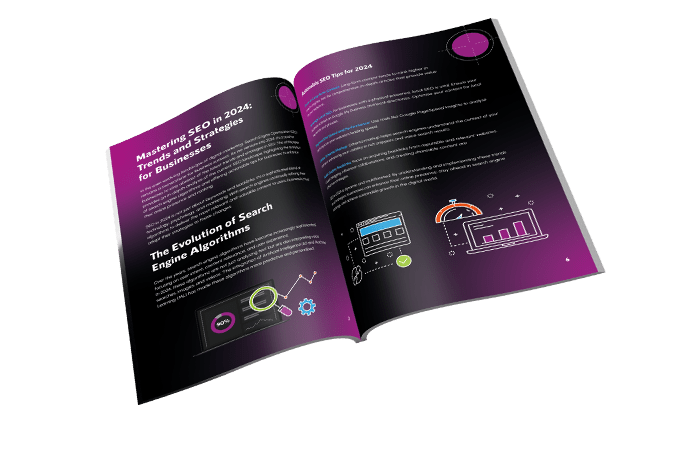News
Optimising Content for Search Engines: Best Practices for 2024
This year brings new trends and techniques that marketers and content creators must adopt to stay ahead. This comprehensive article delves into the best practices for creating SEO-friendly content that not only attracts but also retains the attention of search engines and users alike.
Understanding the SEO Landscape
The Evolution of SEO
SEO has come a long way from the early days of keyword stuffing and backlink spamming. Modern SEO is sophisticated, focusing on providing value to users while adhering to search engine guidelines. Google’s algorithms, for instance, have become exceptionally adept at understanding user intent and context, making it imperative for content creators to align their strategies accordingly.
The Role of Search Engines
Search engines like Google, Bing, and Yahoo serve as gateways to information on the internet. They use complex algorithms to rank content based on relevance, quality, and user experience. Understanding these algorithms and how they evaluate content is crucial for any SEO strategy.
Keyword Research and Optimisation
Importance of Keyword Research
Keywords are the cornerstone of SEO. They help search engines understand the topic of your content and match it with user queries. Conducting thorough keyword research is essential to identify the terms and phrases your target audience is searching for.
Tools for Keyword Research
Several tools can assist in keyword research, such as Google’s Keyword Planner, Ahrefs, SEMrush, and Moz. These tools provide insights into search volume, competition, and related keywords, helping you craft a targeted strategy.
Long-Tail Keywords
Long-tail keywords, which are more specific and often longer than generic keywords, are particularly valuable. They typically have lower search volumes but higher conversion rates because they capture users with specific intent. For example, a business might target “best organic skincare products for sensitive skin” rather than just “skincare products.”
High-Quality Content Creation
Understanding User Intent
Creating high-quality content begins with understanding user intent. Are users looking for information, seeking to make a purchase, or searching for a specific website? Tailoring your content to meet these needs enhances its relevance and usefulness.
Crafting Engaging and Informative Content
Content should be engaging, informative, and valuable. This involves:
- Using Clear and Concise Language: Avoid jargon and complex sentences. Aim for clarity and readability.
- Incorporating Visuals: Images, videos, infographics, and other visuals can make content more engaging and digestible.
- Providing Comprehensive Information: Cover topics in-depth to establish authority and provide real value to readers.
On-Page SEO Techniques
Meta Tags and Descriptions
Meta tags, including title tags and meta descriptions, are critical for SEO. They provide search engines and users with a summary of your content. Crafting compelling meta descriptions can increase click-through rates (CTR) from search engine results pages (SERPs).
Header Tags
Using header tags (H1, H2, H3, etc.) helps organise content and makes it easier for both search engines and users to navigate. Headers should include relevant keywords to signal the structure and main points of your content.
Optimising Images
Images should be optimised with descriptive file names and alt text to improve SEO and accessibility. Alt text provides context to search engines and helps visually impaired users understand the content of the images.
Technical SEO
Site Speed and Mobile Optimisation
Site speed is a critical ranking factor. Slow-loading websites can frustrate users and lead to higher bounce rates. Tools like Google PageSpeed Insights can help identify and fix speed issues. Additionally, with the increasing use of mobile devices, ensuring your website is mobile-friendly is crucial. Google’s mobile-first indexing means that the mobile version of your site is considered the primary version for ranking purposes.
URL Structure
A clear and logical URL structure enhances both user experience and SEO. URLs should be short, descriptive, and include relevant keywords. Avoid using special characters and ensure consistency in your URL formatting.
Off-Page SEO
Building Quality Backlinks
Backlinks from reputable websites signal to search engines that your content is authoritative and trustworthy. Strategies for acquiring backlinks include guest blogging, influencer collaborations, and creating shareable content that others want to link to.
Social Media Integration
While social media signals are not direct ranking factors, they can drive traffic to your site and increase content visibility. Sharing your content on social media platforms can attract backlinks and foster engagement.
Latest Trends and Techniques in SEO for 2024
1. AI and Machine Learning
Artificial intelligence (AI) and machine learning are transforming SEO. Tools like Google’s RankBrain use machine learning to better understand search queries and deliver relevant results. Content creators should focus on producing high-quality, user-focused content that AI algorithms can easily understand and rank.
2. Voice Search Optimisation
With the rise of voice-activated devices like Amazon Alexa and Google Home, voice search optimisation is becoming increasingly important. Voice searches are often longer and more conversational than text searches. Optimising for voice search involves using natural language and focusing on long-tail keywords and question-based queries.
3. Video Content
Video content continues to grow in popularity. According to a study by Cisco, video traffic will account for 82% of all consumer internet traffic by 2022. Optimising video content involves using descriptive titles, tags, and descriptions, as well as transcribing videos to improve accessibility and searchability.
4. Core Web Vitals
Core Web Vitals are a set of metrics that Google uses to measure user experience, focusing on loading performance, interactivity, and visual stability. Ensuring your website meets these standards is crucial for maintaining high rankings.
5. Local SEO
For businesses targeting local customers, local SEO is essential. This involves optimising your Google My Business profile, acquiring local backlinks, and ensuring your NAP (name, address, phone number) information is consistent across all online platforms.
Practical Steps to Implement SEO Best Practices
Conducting a Comprehensive SEO Audit
An SEO audit is the first step in identifying areas for improvement. Tools like SEMrush, Ahrefs, and Moz can help you analyse your website’s performance, uncover technical issues, and provide actionable insights.
Developing a Content Strategy
A well-defined content strategy is crucial for sustained SEO success. This involves:
- Identifying Target Audience and User Intent: Understand who your audience is and what they are looking for.
- Creating a Content Calendar: Plan your content in advance, ensuring a consistent publishing schedule.
- Diversifying Content Formats: Use a mix of blog posts, videos, infographics, and other formats to engage your audience.
Monitoring and Analysing Performance
SEO is an ongoing process that requires regular monitoring and analysis. Use tools like Google Analytics and Search Console to track your performance, identify trends, and make data-driven decisions.
Optimising content for search engines is a dynamic and multifaceted process that requires a deep understanding of both user behaviour and search engine algorithms. By staying abreast of the latest trends and implementing best practices, businesses can enhance their online visibility, attract more traffic, and ultimately drive growth.
As we move through 2024, the focus should be on creating high-quality, user-centric content that meets the evolving needs of both users and search engines.





The Ultimate Social Media Guide
With the ever-growing power of social media, we use the latest techniques, video, and animation software to craft eye-catching social media assets that make your brand pop. Our designers, wielding Adobe Creative tools, create distinctive animations and graphics to illuminate your brand story and highlight your products or services. Want a unique design? No problem – we also offer bespoke designs to match your brand aesthetic.